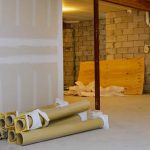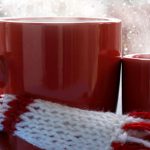Where to Weatherize: Upper Air Leaks
Where to Weatherize: Upper Air Leaks
Weatherizing is a key practice for homeowners that involves protecting the interior of homes and buildings in order to enhance its durability against the outside elements. Homeowners must realize that weatherizing their home is an essential and necessary cost to ensure safety and energy efficiency within their home. However, not everyone understands the ins and outs of weatherization and what areas to focus on within their home. To optimize weatherization within the upper areas of your home, focus on these areas of your home to prevent air leaks, trouble from the elements, or HVAC disasters.
Where to Weatherize in the upper areas of your home
- Top-Plate
Make sure that there is an airtight seal between the drywall and the top plate where the attic and the drywall meets. An airtight seal is created using construction adhesive like caulk and foam. Doing this will minimize air leaks and will allow your HVAC system to work more efficiently.
- Duct-Register
A common area that air leaks occur is around air ducts. That being said, air ducts can be found in the ceilings, walls, and floors of your home. Therefore, it is imperative that these areas have proper weatherization. Hence, caulk or foam can be used to provide an airtight seal around the ducts which will prevent warm air from rising up and dissipating and or cold air from being lost through the ducts on the ground.
- Attic Hatch
Attic hatches, often referred to as attic doors are often overlooked when considering ways to increase energy efficiency. Although these doors are usually only opened when decorating/storing for the holiday season they could be costing you money. Surprisingly, attic hatches should be insulated just like any other exterior-facing door in your home.
- Recessed Light
Recessed lights are lights that are tucked into the ceiling of your home. Therefore, this process requires cutting a hole directly into the ceiling. Hence, this often leads to significant air leaks in the space between the fixture and the hole it’s placed in. Accordingly, air leaks cause the HVAC and heating systems to work harder due to the inefficiencies caused by poor weatherization. For that reason, although your recessed lights may look appealing, they could also be hurting your pockets at the same time. At Potential Energy, we can make sure that your recessed lights not only look amazing but are properly insulated as well.
- Plumbing Vent Stack
The main function of a vent stack is to regulate air pressure throughout the areas of your home’s plumbing system. Additionally, the vent stack disposes of the smells and gasses that accumulate inside of the septic system. Without regulated air pressure, waste and water would not be able to move through the pipes. This would leave still standing water and waste that could create clogging. Therefore, if you don’t insulate your vent stack it can cause problems such as condensation buildup. This is caused by the stacks carrying warm and moist air from your home to outside. If heat coming from your home is transferred to the pipe it will cause condensation and potentially cause water damage at your ceiling or in your attic.
- Dropped Soffit
A soffit is a lowered portion of the ceiling in a room. There are a variety of reasons why a home may have a soffit whether it’s for aesthetic or functional purposes. From an aesthetic point of view, a soffit adds some character to a room. Additionally, the soffit allows homeowners the option to have unique lighting options and hide any exposed beams or piping that can be an eyesore. In terms of functionality, soffits can protect rafters by protecting them from the elements such as moisture that can lead to mold. Therefore, it’s important to make sure to weatherize your soffit.
Why Weatherize?
Proper weatherization can help create optimal energy efficiency within your home. It can also help protect your home from air leaks while saving you money on heating and cooling costs. Having an expert assess your situation gives you the peace of mind that your home is structurally sound and not a financial liability.





